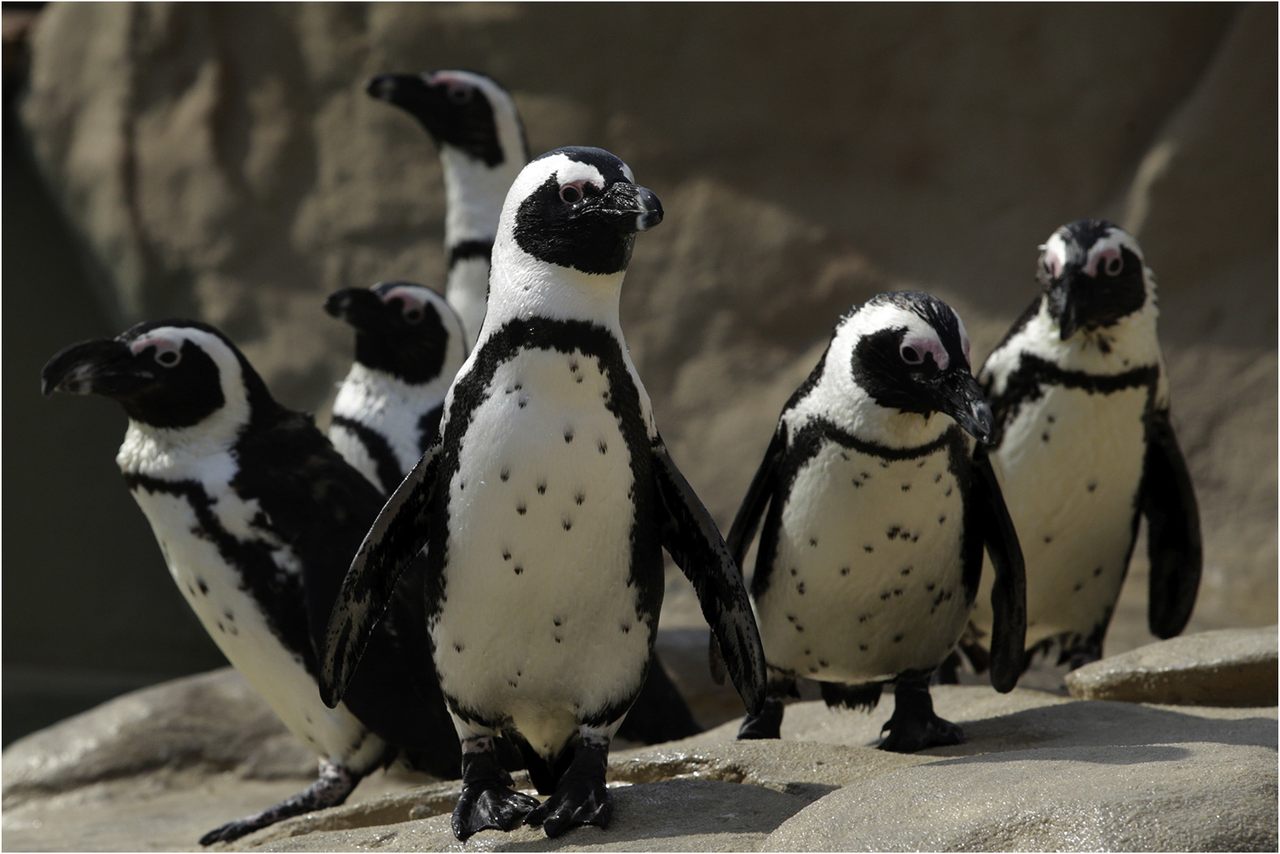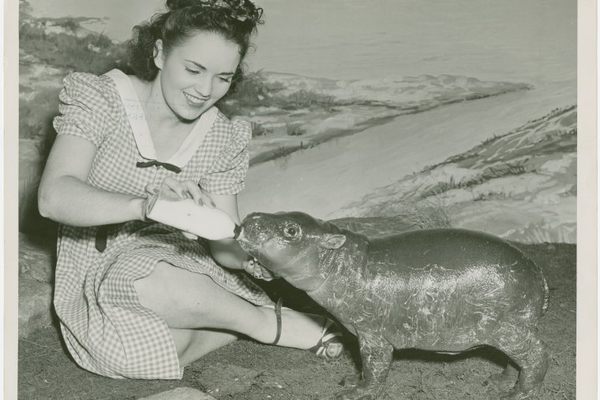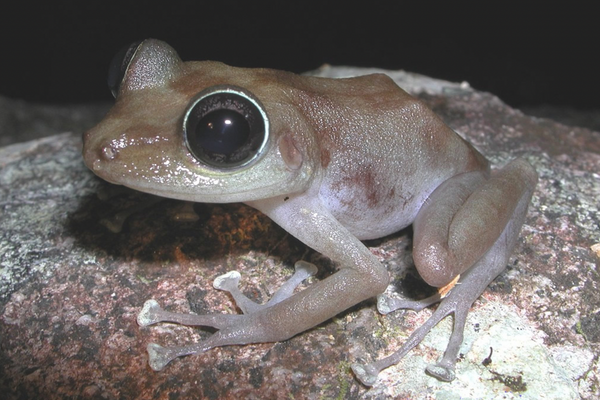How Polka Dots Help African Penguins Stand Out From the Crowd
A new study shows how the birds identify their mates in a sea of black and white.
Colonies of two-foot-tall African penguins gather along the continent’s southwestern coast and islands, at times forming a seemingly endless sea of what appear to be nearly identical individuals. Researchers who study the birds rely on the smattering of spots across each bird’s white chests to tell them apart—but they’re not the only ones. The penguins themselves use these dots, too, to identify their lifelong mates, according to a recent study in Animal Behavior.
“Especially in birds, people focus on recognition through vocalization most of the time, but sometimes we underestimate the abilities of animals,” says lead author Luigi Baciadonna, a psychologist who conducted the research while at the University of Turin in Italy.
Penguins, like most birds, are chatterboxes. But African penguins are one of just a few birds thought to recognize individuals based—in part, at least—on looks, rather than squawks alone. Murres, for example, have also been shown to home in on their own nestless eggs among others by their unique patterns of speckles, says comparative psychologist Mark Hauber, at the Graduate Center of the City University of New York, who was not involved in the study. Crows, Bewick’s swans, and colony-living quelea finches are also thought to use visual cues in this way, but scientists aren’t quite sure what features they most look to.

To get a better bird’s-eye view, Baciadonna and his team of researchers enlisted the help of six African penguin (Spheniscus demersus) mate pairs at Zoomarine Italia, a zoo and marine park near Rome. During a sardine dinner, researchers ushered birds, one-by-one, into an enclosure just high enough for no penguin to peek over, with two life-size photos of penguins looking back at them. One was of this bird’s mate. The other showed a rando bird from the zoo’s colony.
African penguins mate for life in monogamous pairs. And it’s not just about procreation—birds of the same sex can pair off, too, like the zoo’s bonded male pair, Nemo and Chicco. These for-life connections made for a clear test: The researchers figured the birds would prefer to engage with their mates over another colony member—if they could identify them without movement or sound. The researchers recorded how long each penguin spent looking at and huddling near each photo. Each bird had 90 seconds to connect the dots.
Upon entry, the penguins looked back and forth between the photos before setting their attention on one—their mate—and moving toward it. The penguins spent an average of 23 seconds admiring their mates’ photos compared to those of random birds, and stood with those familiar figures twice as long.
Next, the team swapped out the mugshots of two different penguins for two images of the same mate—one with dots and one with them digitally wiped away. The birds trended toward the properly polka-dotted and familiar figure. Things got confusing when the researchers exchanged the photos for one of the mate and one of a random bird from the colony—both with their dots removed. The penguins couldn’t seem to recognize either bird and showed no allegiance to their mate’s photo. The dots seemed to be key for identification, but the research crew ran two more tests: one with only the mate and non-mate’s heads exposed—to which the birds showed no recognition or preference—and one with only their polka-dot bodies visible, in which the birds stared longer at the mate. The findings seem pretty clear: Among partners at least, the dots are a dead giveaway.
Based on these findings and his previous research, Baciadonna bets the dot-theory could apply to other colony-mates too, and might give us insight into the bird world beyond. He hopes this research can open our minds to the potential visual abilities of all birds. “We speculate that, given their high visual acuity, many other bird species also probably use visual features for individual recognition,” wrote the researchers in their paper.
This is the first experiment that captured a bird species’ recognition of individuals based on a specific aesthetic feature on the fly, or “spontaneously,” rather than with training, says Baciadonna. Hauber agrees the study—like penguin dots—stands out from the crowd. “This is the first study that I can think about that experimentally showed individual recognition using visual signals of feathers in birds,” he says.


























Follow us on Twitter to get the latest on the world's hidden wonders.
Like us on Facebook to get the latest on the world's hidden wonders.
Follow us on Twitter Like us on Facebook